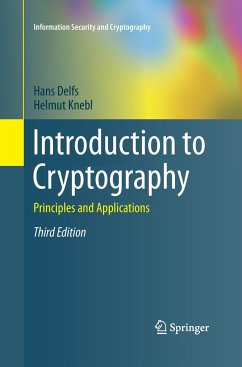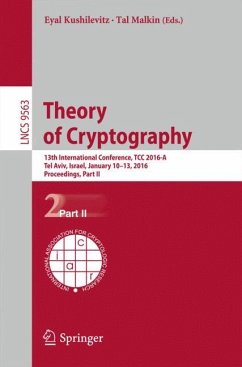Due to the rapid growth of digital communication and electronic data exchange, information security has become a crucial issue in industry, business, and administration. Modern cryptography provides essential techniques for securing information and protecting data.
In the first part, this book covers the key concepts of cryptography on an undergraduate level, from encryption and digital signatures to cryptographic protocols. Essential techniques are demonstrated in protocols for key exchange, user identification, electronic elections and digital cash. In the second part, more advanced topics are addressed, such as the bit security of one-way functions and computationally perfect pseudorandom bit generators. The security of cryptographic schemes is a central topic. Typical examples of provably secure encryption and signature schemes and their security proofs are given. Though particular attention is given to the mathematical foundations, no special background in mathematics is presumed. The necessary algebra, number theory and probability theory are included in the appendix. Each chapter closes with a collection of exercises.
The second edition contains corrections, revisions and new material, including a complete description of the AES, an extended section on cryptographic hash functions, a new section on random oracle proofs, and a new section on public-key encryption schemes that are provably secure against adaptively-chosen-ciphertext attacks.
In the first part, this book covers the key concepts of cryptography on an undergraduate level, from encryption and digital signatures to cryptographic protocols. Essential techniques are demonstrated in protocols for key exchange, user identification, electronic elections and digital cash. In the second part, more advanced topics are addressed, such as the bit security of one-way functions and computationally perfect pseudorandom bit generators. The security of cryptographic schemes is a central topic. Typical examples of provably secure encryption and signature schemes and their security proofs are given. Though particular attention is given to the mathematical foundations, no special background in mathematics is presumed. The necessary algebra, number theory and probability theory are included in the appendix. Each chapter closes with a collection of exercises.
The second edition contains corrections, revisions and new material, including a complete description of the AES, an extended section on cryptographic hash functions, a new section on random oracle proofs, and a new section on public-key encryption schemes that are provably secure against adaptively-chosen-ciphertext attacks.
"The book has several new inclusions over its previous editions including the SHA-3 algorithm for hashing and ElGamal encryption. ... The authors also include a textual context for each of the ciphers and hashing algorithms with both historical significance and potential application, which makes this an excellent reference book for graduate-level learners, researchers, and professionals. Overall, this work ... offers an excellent view of the current state of cryptography. ... Summing Up: Highly recommended. Graduate students, researchers/faculty, and professionals/practitioners." (T. D. Richardson, Choice, Vol. 53 (11), July, 2016)
"This is a thorough introductory text on cryptography from an engineering viewpoint. It provides a good overview of the whole subject, including secret-key ('symmetric') and public-key methods, hash functions, and signing. There's a 90-page appendix that summarizes the mathematics needed (mostly number theory, with some abstract algebra and probability).The book is well-written and easy to follow." (Allen Stenger, MAA Reviews, maa.org, April, 2016)
"Delfs and Knebl in this book focus on the mathematical aspects of cryptography. ... this book is best suited for a graduate course in mathematics. ... recommend this book for readers with strong mathematical backgrounds who are interested in the foundations of the field." (Burkhard Englert, Computing Reviews, March, 2016)
"This is a thorough introductory text on cryptography from an engineering viewpoint. It provides a good overview of the whole subject, including secret-key ('symmetric') and public-key methods, hash functions, and signing. There's a 90-page appendix that summarizes the mathematics needed (mostly number theory, with some abstract algebra and probability).The book is well-written and easy to follow." (Allen Stenger, MAA Reviews, maa.org, April, 2016)
"Delfs and Knebl in this book focus on the mathematical aspects of cryptography. ... this book is best suited for a graduate course in mathematics. ... recommend this book for readers with strong mathematical backgrounds who are interested in the foundations of the field." (Burkhard Englert, Computing Reviews, March, 2016)








